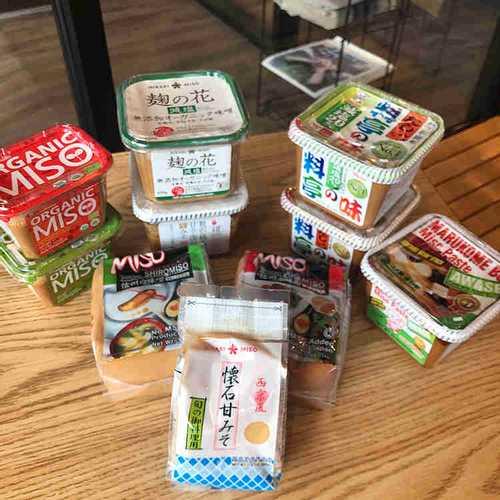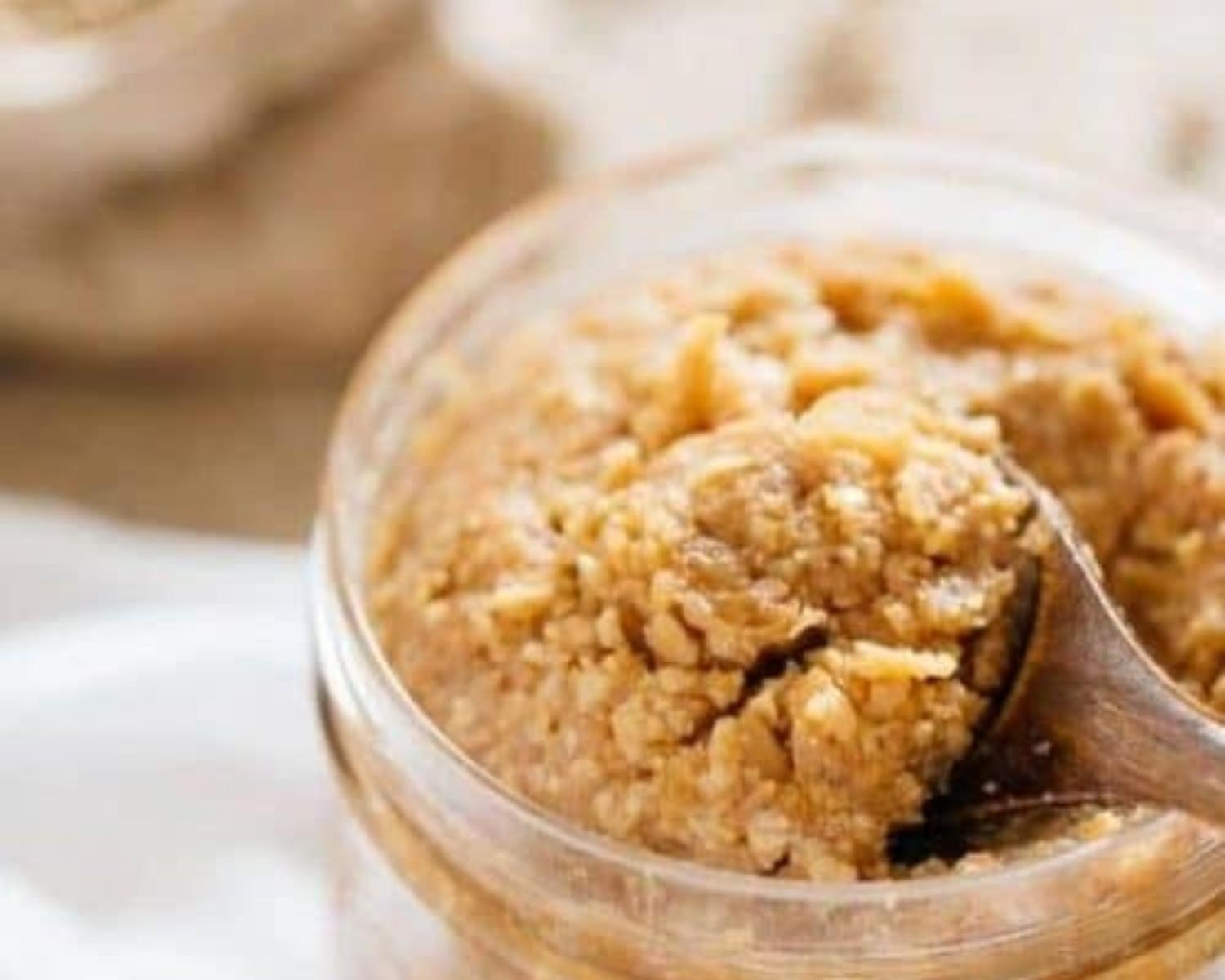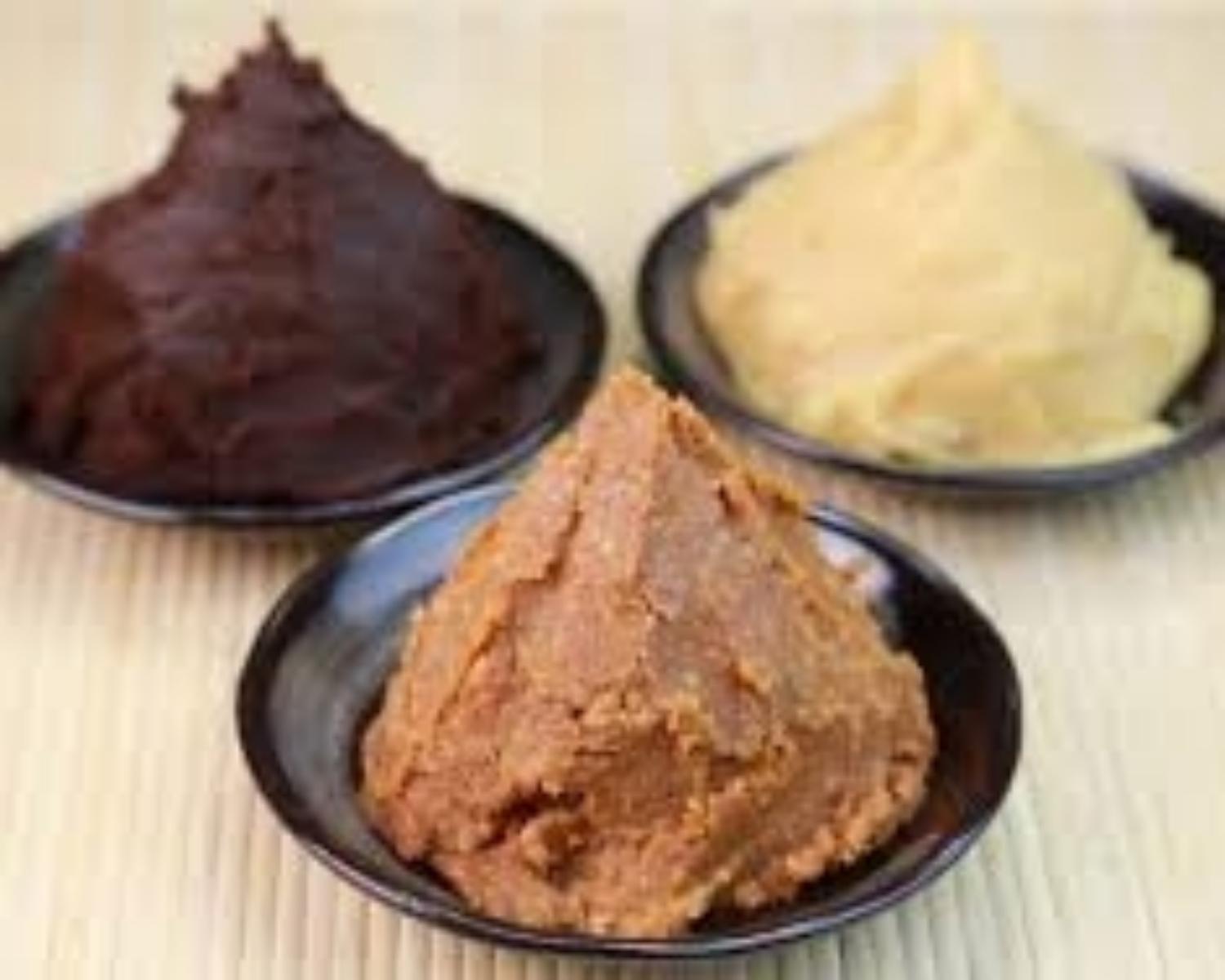Explore the World's Best Ideas
Join today and uncover 100+ curated journeys from 50+ topics. Unlock access to our mobile app with extensive features.
Miso: Which Type Do You Need?
Miso is a traditional Japanese condiment made by fermenting soybeans with salt and koji, a type of mold used to create a wide variety of fermented foods in Japan. Often, additional ingredients, such as barley, rice, seaweed or even dashi are added to add complexity to the flavor. The result is a thick, somewhat granular paste that is salty, somewhat savory, with an ever-so-slightly sour fragrance. Not only it is added to broths, it is also an ingredient in marinades, salad dressings, and sauces. It has a fairly strong flavor, so in whatever way you choose to use it, a little goes a long way.
2
43 reads
3 Main SubTypes Of Miso: WHITE MISO
There are 3 main subtypes of miso. They are red, white, and awase.
White Miso / SHIRO MISO 白味噌
Its more yellowish beige color(than white) due to the soybeans' boiling process which prevents the Maillard reaction. Its made with about 40% soybean and 60% rice/barley and a shorter fermentation time which results in a milder taste and lighter color.
2
22 reads
3 Main Subtypes of Miso: RED MISO
AKA MISO 赤味噌
Made from about 70% soybean and 30% rice/barley. Instead of boiled, the soybeans are steamed before koji is added.
Red miso contains the highest levels of protein of all types of miso.
Despite its name red miso's color can range from deep amber to chestnut. The color being due to the Maillard reaction when the amino acids in the soybeans react with the sugars, resulting to browning. Red miso will continue to brown with more time. The long fermentation period of about 1 to 1. 5 years results in the darker colored, strong and salty miso paste (13%).
2
13 reads
3 SubTypes of Miso: BLENDED MISO
Awase Miso 合わせ味噌
Awase miso mixes red and white miso together for a product that combines the delicateness of white miso with the robustness of red, because of this, it is more versatile and can be used for any purposes.
2
19 reads
Useful Miso FYIs
1. Color as an indicator of the miso's age and saltiness.
The color of miso ranges from light yellow-brown to reddish brown to dark chocolate brown; the flavor from mildly, salty to sweet to strong and very salty.
The longer a miso is aged, the deeper in color and flavor it gets.
Light colored misos are often younger than dark colored ones.
So, generally speaking, the lighter the color, the less salty (or even sweeter) the miso is.
3
16 reads
Useful Miso FYIs
The taste of miso is usually categorized into:
1. Sweet (Ama Miso 甘味噌)
2. Mild (Amakuchi Miso 甘口味噌)
3. Salty (Karakuchi Miso 辛口味噌) based on the ratio of salt and koji used.
2
16 reads
Useful Miso FYIs
3. Shelf life
You can definitely keep unopened miso at room temperature, though it is suggested that you keep it in a cool, dark area.
But once opened, the best way to store miso which is considered a living food; according to manufacturers is to store it well covered in a refrigerator.
If stored in a freezer the temperature must be higher than 25F or -5C to prevent it from freezing and to maintain its taste and aroma. Though it won't go 'off' that fast, consume it within a year of purchase
2
10 reads
Useful Miso FYIs
4. Japanese or non-Japanese miso
Commercially available Japan-made miso is usually aged for 6 months to 2 years. It may be useful to note that misos made by Eden Foods in the U.S. or Clearspring in the UK may have not been aged as long, and therefore do not have depth of flavor. I've tried them myself so I suggest going for the authentic miso imported from Japan; that is if you want the real miso experience.
2
10 reads
Useful Miso FYIs
5. With/without dashi
Since miso is so often used in conjunction with dashi stock, some misos already have dashi added to them. These are usually labeled dashi iri (だし入り)
If you don't want one with dashi, look for additive-free or mutenka (無添加)miso
If you can't tell from the label, look at the ingredient list - it should only have soy beans, salt, rice or barley (if they used), and some fermentation ingredients [usual listed as koji (麹)]
2
10 reads
Useful Miso FYIs
Organic or GM
If you want miso thats made from soy beans that are organically grown (not genetically modified) look for ones that say yuuki (有機. Most if not all miso that say mutenka (無添加)or additive-free are also non-GM .
If the miso is made from "kokusan" (国産) or domestic (Japanese) soy beans; this usually means that it's made from non-GM, happy soy beans.
6. Gluten free
Unless the miso contains barley (麦、mugi) or wheat (小麦、komugu) it is gluten-free, unless it has some not-traditional additives
2
7 reads
Types of Miso According to its Ingredients
Kome Miso
A category of miso made with white rice; most common type miso
Genmai Miso
Made with brown rice giving it a unique, nutty, flavor; a newer variety of miso that's becoming popular in N. America
Mugi Miso
Made with barley grains, has a long fermentation period, a reddish/dark brown color and a deep, earthy flavor
Mame Miso
Mostly soybeans and very little grains. The soybeans cause it to darken and have a very rich flavor
*Hatcho miso- a type of mame miso
Soba Miso
Buckwheat is added to soba miso during fermentation, has a similar taste to other buckwheat products like soba noodles, uncommon
2
8 reads
Useful Miso FYI
Other Types of Miso you should know about:
Hatcho miso(八丁味噌) an all-soybean miso made in the Tokai region (now the 3 prefectures of Aichi, Mie and Gifu). It was said to have been served to the emperor and is held in high regard. It's about a medium on the sweet/strength/saltiness scale, and is a good general purpose miso.
Moromi miso (もろみ味噌) - a mildly salty, chunky miso, usually with added grains of rice or barley that's meant to be eaten as a condiment rather than used in cooking. It's used like a dip on raw vegetables and so on.
2
8 reads
Useful Miso FYIs:Other types of miso you should know about Saik
(西京味噌) - a priced golden yellow miso traditionally made in the Kyoto/Kansai region. Its sweetness comes from the sugar byproduct produced during fermentation [like in amazake) , low sodium content (5-7%), higher rice koji ratio to soybeans, and a short fermentation period
Makes for a good dipping sauce/condiment, and is used as a sweetener in baked goods by some Japanese chefs. Due to its lower salt content, it doesn't keep as well as other miso types so it must be kept refrigerated.The recipe in the Nobu restaurant group website that uses white sugar is just a sweet miso sauce, NOT Saikyo miso
2
8 reads
Useful Miso FYIs
Other types of miso you should know about
Shinshu (信州味噌), the yellow miso
Originally produced in Nagano prefecture (Shinshu 信州 during feudal times). It is made with rice koji, soybeans, and salt.
It contains less rice koji and 10-12% sodium content. It has a long fermentation period
Its texture is smooth and the color can range from yellow-brown to beige.
It’s a great all-purpose miso as it’s mild and will suit any dish. Around 40% of the miso produced in Japan and abroad is Shinshu miso.
2
7 reads
Useful Miso FYIs:other Miso Types You Should Know About
Koji Miso (麹味噌)
This miso is made with large quantities of koji, producing miso with a sweet and mild taste, a chunky texture, deep aroma, and rich flavor. Koji miso can be made of rice, barley, or soybean, but the ratio of koji used in miso is higher and the koji grains are visible.
2
7 reads
Useful Miso FYIs:other Miso Types You Should Know About
Koji Miso (麹味噌)
This miso is made with large quantities of koji, producing miso with a sweet and mild taste, a chunky texture, deep aroma, and rich flavor. Koji miso can be made of rice, barley, or soybean, but the ratio of koji used in miso is higher and the koji grains are visible.
1
7 reads
Useful Miso FYIs:Other Types of Miso You Should Know About
Sendai Miso (仙台味噌)
A dark reddish brown miso produced in Miyagi prefecture (Sendai is the prefectural capital of Miyagi). Although made with the same ingredients as Shinshu and Saikyo miso, it contains more soybeans than rice. Despite its higher sodium content (11-13%), its saltiness is balanced out by a longer fermentation period making Sandai miso rich and delicious even on its own that it’s often called namemiso (なめみそ, “lickable miso”).
2
7 reads
IDEAS CURATED BY
Jack of all people-related trades, master of none. Majored in Psychology, Customer Service Assoc for a few Years, HR Officer for 4, Manager and ESL Teacher for over 11 yrs now, an artist since birth.
Wil Powers's ideas are part of this journey:
Learn more about food with this collection
How to improvise with ingredients
How to follow a recipe
How to prepare ingredients
Related collections
Similar ideas
7 ideas
How to Stock a Pantry
eater.com
18 ideas
How to Stock a Modern Pantry
nytimes.com
7 ideas
The Meat-Lover's Guide to Eating Less Meat
nytimes.com
Read & Learn
20x Faster
without
deepstash
with
deepstash
with
deepstash
Personalized microlearning
—
100+ Learning Journeys
—
Access to 200,000+ ideas
—
Access to the mobile app
—
Unlimited idea saving
—
—
Unlimited history
—
—
Unlimited listening to ideas
—
—
Downloading & offline access
—
—
Supercharge your mind with one idea per day
Enter your email and spend 1 minute every day to learn something new.
I agree to receive email updates


